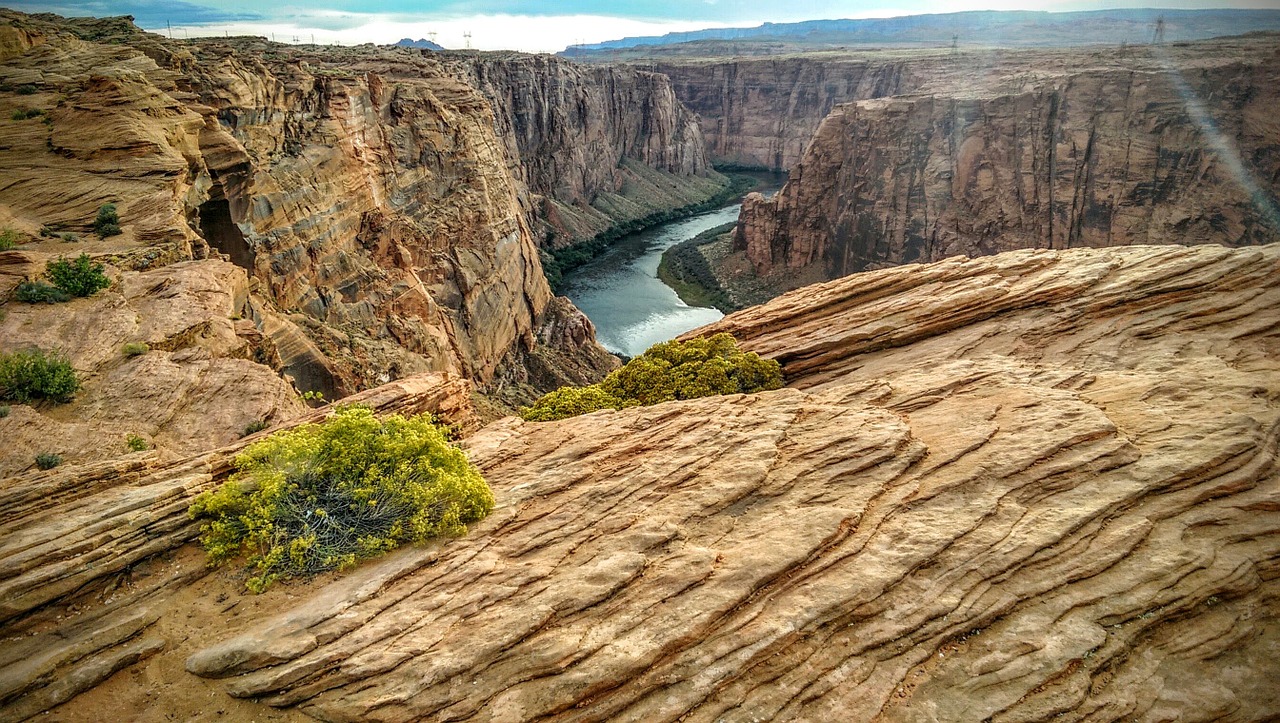A severe drought is sweeping much of the western US, and scientists are talking about a “mega drought” caused by climate change.
The Colorado River system, which supplies water to 40 million people in seven states, has been shut down. For more than eight decades, Hoover Dam has relied on water from Lake Mead in Nevada to cover its backside. But now the water the dam is supposed to hold back has disappeared, according to the US Army Corps of Engineers.
Lake Mead, the country’s largest reservoir, is the water source for more than 40 million people in seven states, according to the US Army Corps.
Record lows at Lake Mead have become an annual event in one of the worst droughts in millennia. Last year’s lows were the expected low in June, and on January 1, its level was lowered to 1.075 feet. If so, the US Office of River Rehabilitation, which manages the river, will declare an official bottleneck, even though mandatory cuts have already been agreed.
For more than eight decades, the iconic Hoover Dam has relied on water from Lake Mead in Nevada to cover its backside. The Colorado River system, which supplies water to 40 million people in seven states, is facing one of the worst droughts in its history, and the federal government may be forced to make drastic and historic decisions.
In an agreement known as a drought contingency plan, or “share,” representatives from Arizona, Nevada, and California have agreed to share water reduction to reduce the risk of Lake Mead receding to critically low levels. The agreement foresees gradual and major cuts as Mead Lake continues to fall below its lowest trigger point in the coming years. There is no order of magnitude that will hit the CAP in the next few years, “said John Cramer, president of Farmers Investment Co., which grows pecans in Sahuarita, and Freeport-McMoRan, which operates a large copper mine near the Green Valley.
While the latest agreement is intended as a temporary emergency measure, officials in the seven river-dependent states are preparing to negotiate new rules to address the shortfall by 2026.
Until then, he said, the current system for managing dams and water supplies would remain unchanged. The Colorado River, which supplies more than 40 million people with water and irrigates millions of acres of farmland, has lost its water supply due to drought and climate change. Droughts that have lasted for two decades have left much of the western United States parched.
As the dwindling snow load provides most of the river’s water supply, experts say, the dry, thirsty bottoms in the basin absorb meltwater from meltwater, meaning less gets into the river system. PHOENIX – Scientists have documented how climate change is choking the Colorado River, and new research shows that it is so vulnerable to warming temperatures in some basins that the Colorado River could lose up to 40% of its river by 2050 if temperatures continue to rise. A study by scientists at the US Geological Survey, published in 2020, found that the Colorado River has declined by about 20% over the last century, and about half of that decline is attributable to warming in the basin.
Scientists at the U.S. Geological Survey found that loss of snow and higher temperatures played an important role in driving the trend of dwindling river flows. Without changes in rainfall, the researchers say, the average Colorado river is likely to drop by about 9%. Warmer temperatures are estimated to be responsible for the decline, which is forcing Western states to take more aggressive measures to increase Colorado’s water – starved reservoirs.
The Colorado River system, which supplies water to more than 40 million people in seven states, including Nevada, absorbs about 40% of the state’s total water supply. Lake Mead is now only 37% full and this week could see the lowest ever recorded. The last time the lake was filled in the 1930s was in 2016, when it was at its lowest level since the Great Depression.
Lake Mead, the country’s largest reservoir, is likely to soon reach its lowest level ever measured, according to a new report from the US Geological Survey (USGS) and the National Weather Service.
Lake Mead’s water level has dropped sharply due to the continuing drought in the West and is part of the Colorado River system. Since 2000, it has fallen to its lowest level in more than a century and a half, according to USGS data.
With Lake Mead’s level dropping below 1,075 feet on Tuesday and likely to continue to drop, it is almost certain that the Bureau of Reclamation will declare a Tier 1 bottleneck later this summer.
If a Tier 1 shortage is identified, the Colorado River’s water supply would be reduced under the 2019 Drought Emergency Plan signed by states with lower Colorado River basins. While Arizona’s major population centers are spared, the effects of water cuts could be felt across the state, as a complex system is used to determine water loss in the event of a water shortage. The Central Arizona Project has cut its water supply by about a third, according to the U.S. Army Corps of Engineers.
![]()
